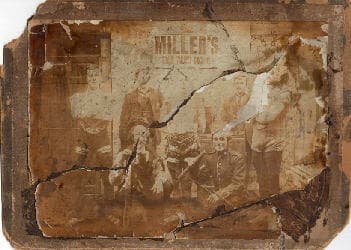Newcastle Hoppings, A Major Fair
Newcastle Hoppings is the largest travelling funfair in Europe (though both Nottingham Goose fair and Hull Fair also claim the title). A major fixture in the funfair calendar. Held in the North East city of Newcastle Upon Tyne over 9 days in June.
With over 300,000 visitors a year, and featuring over 60 major adult rides, and a plethora of children’s rides, games and catering to match. The event is held in June to coincide with the Northumberland Plate. Part of the flat season races for horses of three years or older.
It is situated on the Town Moor, a large grazing land just outside the city centre (during the first world war it was held in Jesmond). The showmen commonly refer to the event as the Town moor, or even just ‘The Moor’, rather than the hoppings name used by the locals.
Temperance Festival Association
The driving force behind the establishment of the hoppings, was Alderman William Davies Stephens, chairman of the Temperance Festival Association. The association, typical of the Victorian era do gooders, felt that the horse race would attract drinking and gambling. They wanted to provide a temperance festival for the miners and other workers as an alternative, to save them from the fires of damnation.
I suppose in a way it was a better idea than the Americans had. Our abstinence gave us a major funfair, the American prohibition gave them Al Capone.
Early Years
In the beginning, the event will have been typical of fairs of that era, stalls, games and sideshows would have formed the bulk of the event. Indeed in the North East, funfairs are often referred to as ‘The shows’ in allusion to the preponderance of that type of attraction.
These tended to be animal managaries, or the popular at the time human freak shows. Large steam powered rides were appearing on funfairs by then, and quite possibly would have attended the hoppings, but at that time they were still a supporting act.
Over the next 50 years the event began to resemble what we would recognise today. With some of the early thrill rides appearing, Octopus, dive bomber, waltzers, all designed to fly you higher, spin you faster and scare witless.
A well known ride, the Moonrocket of Shaws, built in 1939. This was typical of the early rides that would have appeared at the Town Moor.
The Modern Era
Nowadays, well not 2020, and possibly not 2021 due to the little matter of a global pandemic, most of the top rides from around the UK appear at the event. Immaculate examples of the old favourites such as dodgems and Waltzers still jostle with the thrill rides for customers. There are fabulous examples of all the current funfair games, children’s rides and food stalls.
A look at the fair from the air shows the sheer scale of the event. Hull and Nottingham might possibly have more rides in attendance, or be classed as bigger due to some other statistic. But for sheer acreage, there isn’t anything else in the UK that comes near.
2013 was notable for the fair being cancelled due to the severe weather leaving the ground in a poor state. Work has since been carried out to improve drainage and add a metalled road to prevent a recurrence.
Charity
The event was always noted for the free riding the showmen provided for a number of charities, the Variety club would bus as estimated 3000 children in to enjoy the showmen’s efforts, usually on the first evening of the event.
Indeed records indicate that the very first year of the festival saw a tea provided for 1000 of the cities poorest children.
The Name Hoppings
When we used to attend the event, I often wondered about just why it was called the Hoppings. I presumed it was one of those stories lost in time. However recently I came across the official website for the event, maintained by the Freeman of the City/Newcastle Council. They offered two possible explanations for the name. One is that hopping was a very old name for a dance.
The other explanation the offer, is that the showmen used to wear sacks as cloths. These would become infested with fleas and the showmen being bitten would ‘hop’ about. Hmm, the photo below is a typical old image of showmen. Actually one of our earliest corporate entertainment crew who provided a show for Queen Victoria. Take a look, although it is in a poor state, it sure looks to me like they were wearing regular type cloths. Nary a cloth sack in sight.

Sources;
